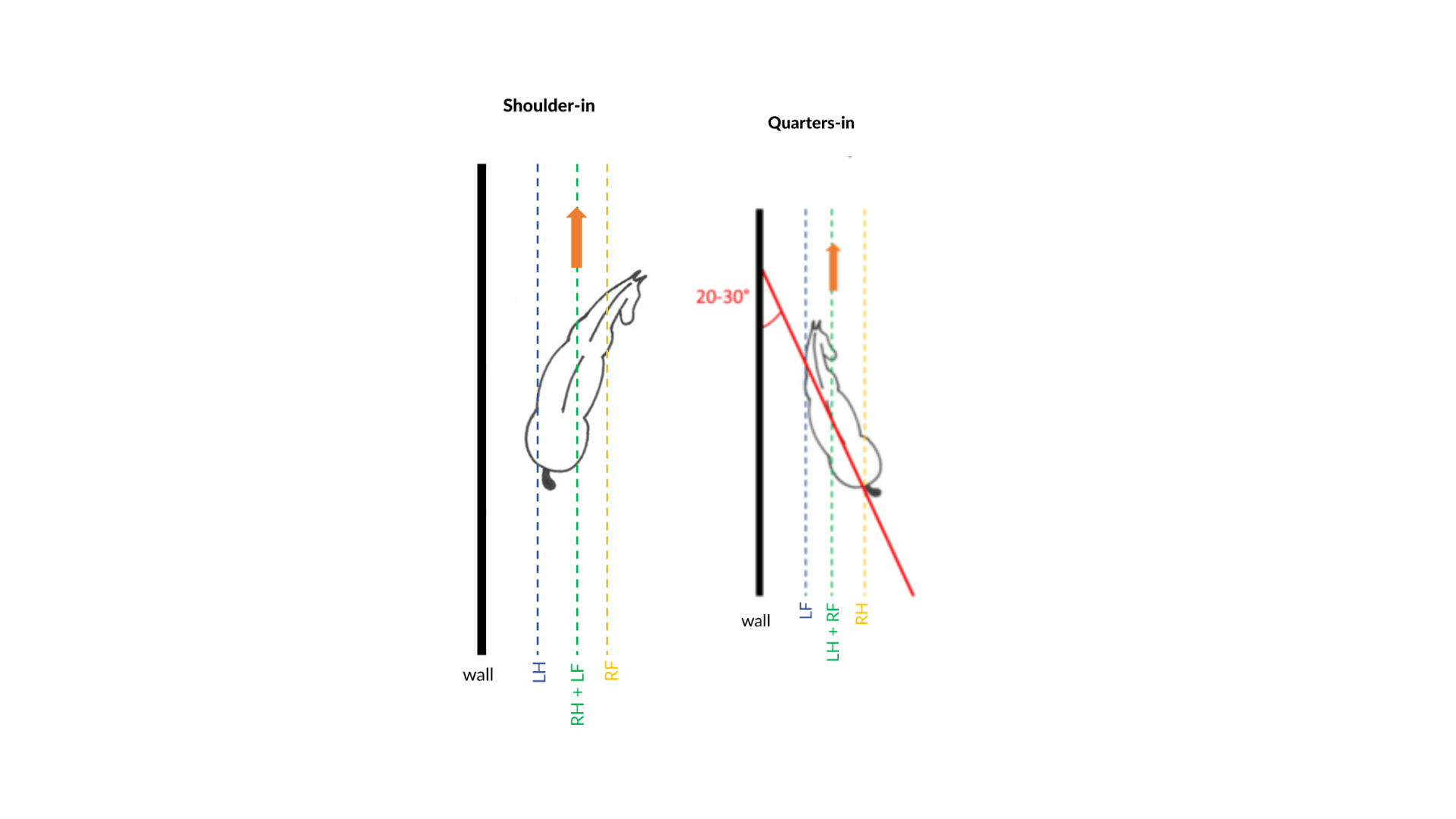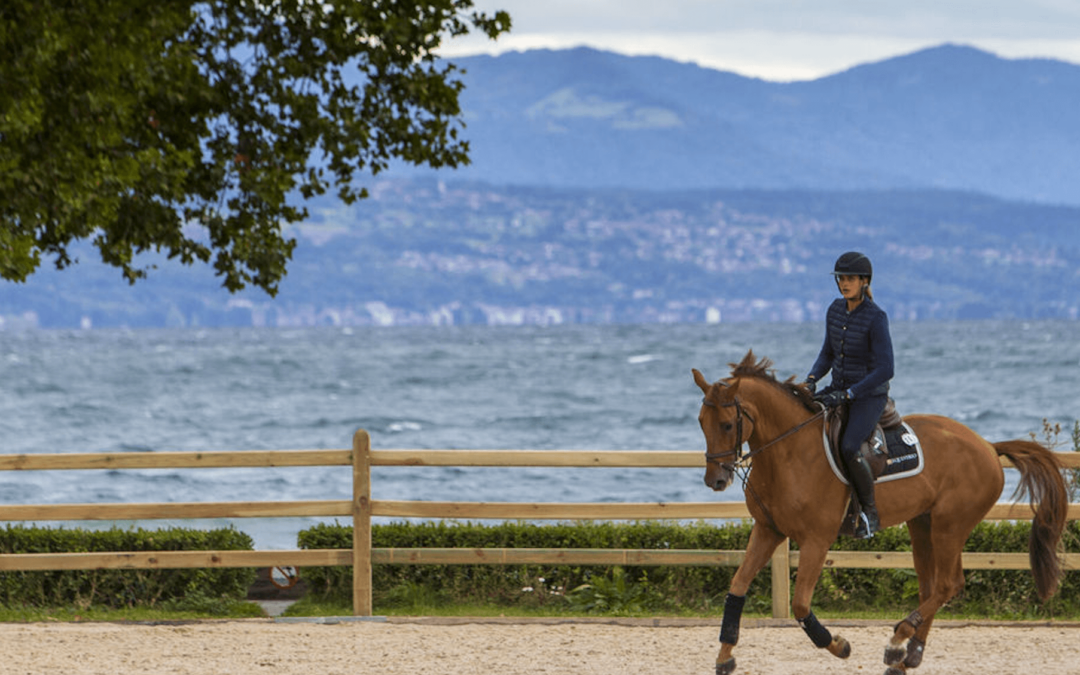The horse’s warm-up is an important part of the training process that should not be skipped. To discover its partner, understand its thinking, and most importantly, get it in shape, find the best methods to succeed in its relaxation.
How does a good warm-up influence a training session? What are the key elements to take into account for horse relaxation?
What is the role of warm-up?
Physical preparation
Similar to a human warm-up, a horse’s warm-up heats the muscles and prepares the body for physical effort. If you were about to run a 1000m race, naturally you would start with a warm-up.
The relaxation phase allows the transition from the “rest” stage to the “effort” stage. All this is done by heating the muscles and raising the heart rate, respiration rate, and body temperature. It also allows to control different indicators in the horse, such as the relaxation level, but also to improve its flexibility through successive exercises.
Mental preparation
Mental health is just as important as physical health. The aim of warm-up is also to prepare for the upcoming training in the best possible way. It allows for evacuating possible stress, caused by the environment. A horse may be fearful and in this situation, the warm-up is a way to calm him, help him explore his environment and to allow him to assess it. It is also a great occasion for the rider to better understand how his horse is functioning and to check that he is following orders, reacting to the aids and listening.
Prevention of injuries
Just like a muscle strain for a human being, a progressive and rigorous warm-up reduces the risk of injury. By preparing the horse for the effort, we avoid a quick overheating or a precipitous rise in temperature of the muscles and the body.
How to optimize the horse’s warm-up?
Factors to take into consideration
Training objective
Depending on the training program, the warm-up will not be the same. If you are planning a jumping session, for example, the horse’s attitude must be more tonic and energetic than in a flat lesson that requires quiet and relaxation. The same is true for a stretching session where the warm-up will focus on neck extensions.
Horse’s level
The horse’s degree of training is the second factor to consider. A 3-year-old horse will not warm up in the same manner as an experienced 15-year-old horse. For a young horse, a lunging session before training might be helpful. This will also allow the rider to assess his horse’s attentiveness and adapt the following ridden warm-up.
To check
A warm-up is built around the horse, first of all from a physical viewpoint. For example, if a horse has back problems, the session can begin with some walking and then progress to cantering and trotting. Adapting and individualising the warm-up will help to protect the horse’s back. Also, when preparing the horse, the rider must be able to analyse its behaviour in order to prepare and conduct the warm-up. If the horse is nervous, a lunging session is recommended, whereas if the horse is anxious, a longer warm-up at walking should be considered.
Heating up exercises
Groundwork is a good way to prepare your horse for ridden work. Lunging or free-riding sessions, before saddling, allow the horse to prepare itself for the following work. Exercises such as stretching, circles, transitions, and groundwork help to increase concentration. It is especially useful for horses that need more time to relax or focus before starting the training session.
Stretching exercices
The walk is the essential gait, which should not be underestimated during the warm-up. It is recommended that a horse be walked for a minimum of 10 to 15 minutes to optimize relaxation. When a horse feels his mouth free from the rider’s hand, his whole body, especially his head and neck, will function in a natural way, favouring relaxation. Moreover, the walk allows to prevent fear and reassures him. The horse naturally gets a lower view and can observe his environment in full confidence. This is also beneficial to the horse’s concentration, as it will not be disturbed by the environment previously discovered.
Neck extensions
Slowly lowering the horse’s head has several benefits: stretching the back muscles and raising it. The extension of the neck must be measured to avoid an imbalance between the forehand and the hindquarters. To preserve this stability, it is essential to maintain regular contact with the horse’s mouth.
Mobilisation exercices
During a warm-up, the aim is to gradually stimulate the horse. Mobilisation exercises can be used to structure a session. The shoulder-in and the hips-in are excellent exercises to work the horse’s flexibility, but also the coordination, balance, hindlimbs engagement, as well as many muscles (abdominal, abductors, adductors, top line).

Define a gradual warm-up routine
During the warm-up phase, it is essential that the intensity of effort increases gradually. This will maximise the safety and well-being of the athlete. For example, during a competition warm-up, the height of the obstacles to be jumped increases progressively. In daily work, it is the same, it is important to request the horse smoothly. Start with slow and wide movements, straight lines, and big circles and then refine its curves and include flexibility exercises such as shoulders-in or hips-in.
Warming up too long
It is important to adapt the warm-up time to the different conditions. But be careful not to make it too long. Indeed, if it is too extended, it can cause premature fatigue in the horse, and thus lead to a loss of concentration and motivation. As a general rule, the time for the warm-up is between 20 and 30 minutes, including different gaits and exercises.
Cold sitting movements
Sitting trot and sitting canter movements should not be started too early in the warm-up. Although these movements are important for the rider’s stability and connection with the horse, they should be introduced slowly in the warm-up. Beginning the session with seated work can have a negative impact on the horse, as the horse’s back is not warm and prepared enough to handle this type of movement.
Conclusion
The warm-up is a key element and the first step to a successful training session. This work should be divided into several steps, including the three gaits, with a significant walking part. The exercises should be progressive and adapted to each horse, to allow its muscles, body and head to warm up properly.
SOURCES :
Bournival, C. and Kinésiologue (n.d.). L’importance de l’échauffement précédent chaque entraînement. [online] Available at: https://centreepic.org/wp-content/uploads/2020/05/Importance-de-l%C3%A9chauffement.pdf) [Accessed 23 Mar. 2023].
Chatel, M.M. and Williams, J.M. (2020). What’s in a warm-up? A preliminary investigation of how European dressage riders and show jumpers warm-up their horses for training and at competition. Comparative Exercise Physiology, pp.1–10.
Vaulry, V. de S. (2020). Comprendre et motiver le cheval au manège: Dressage, obstacle, club, western…. [online] Google Books. Vigot. Available at: https://books.google.fr/books?hl=fr&lr=&id=IIYIEAAAQBAJ&oi=fnd&pg=PA11&dq=la+bonne+d%C3%A9tente+d%27un+cheval+&ots=6UnY1dP14P&sig=8ToDYMHyDJ76oM7kkReGTRTKx7A&redir_esc=y#v=onepage&q&f=false [Accessed 23 Mar. 2023].
Ifce.fr. (2023). Available at: https://equipedia.ifce.fr/enseignement-equestre/didactique-et-techniques-equestres/dressage/lepaule-en-dedans [Accessed 23 Mar. 2023].
www.youtube.com. (n.d.). Comment bien détendre votre cheval – Equidia Life. [online] Available at: https://www.youtube.com/watch?v=qEW_Qpx72KY [Accessed 23 Mar. 2023].
Keywords: warm-up of the horse, stretching, back muscles, neck extensions, equine gait analysis tool, equine care technology, Lameness diagnostics,Prevention and early detection,Individualized gait pattern, EnvA, CIRALE,
Photo credit @Scoopdyga


